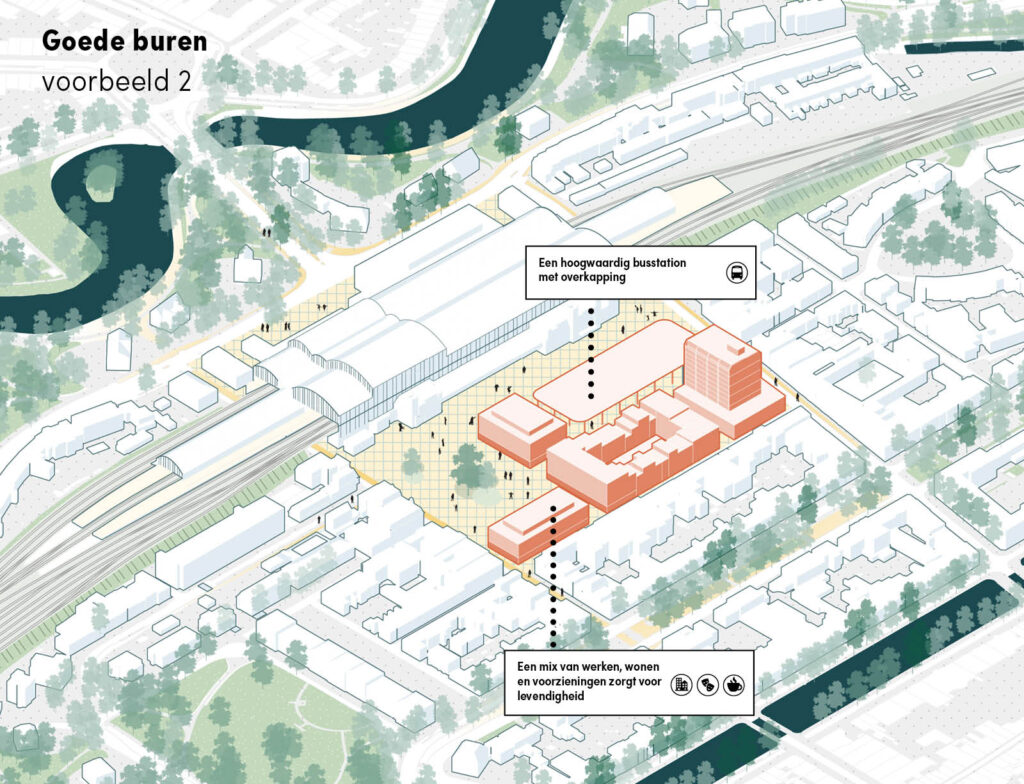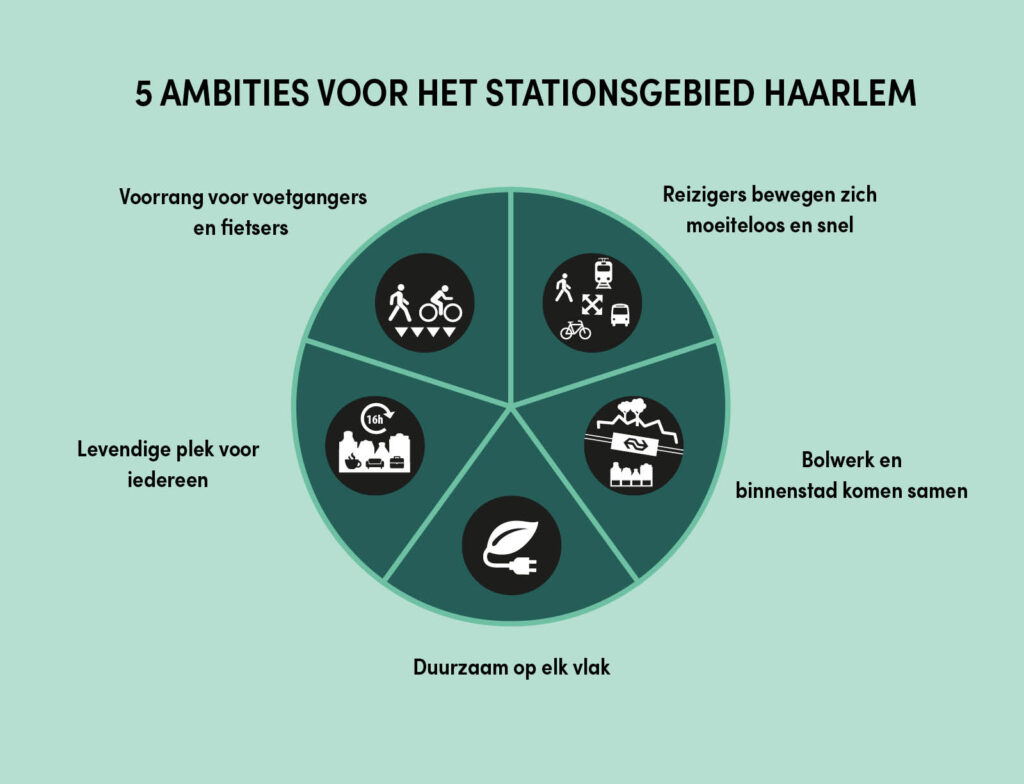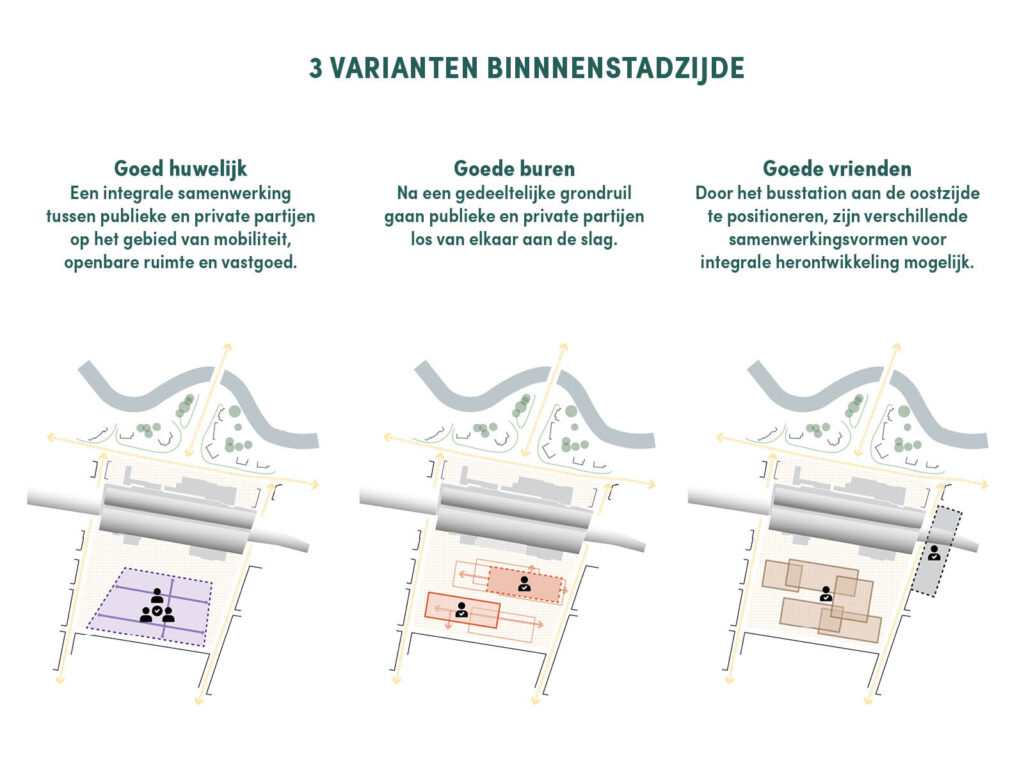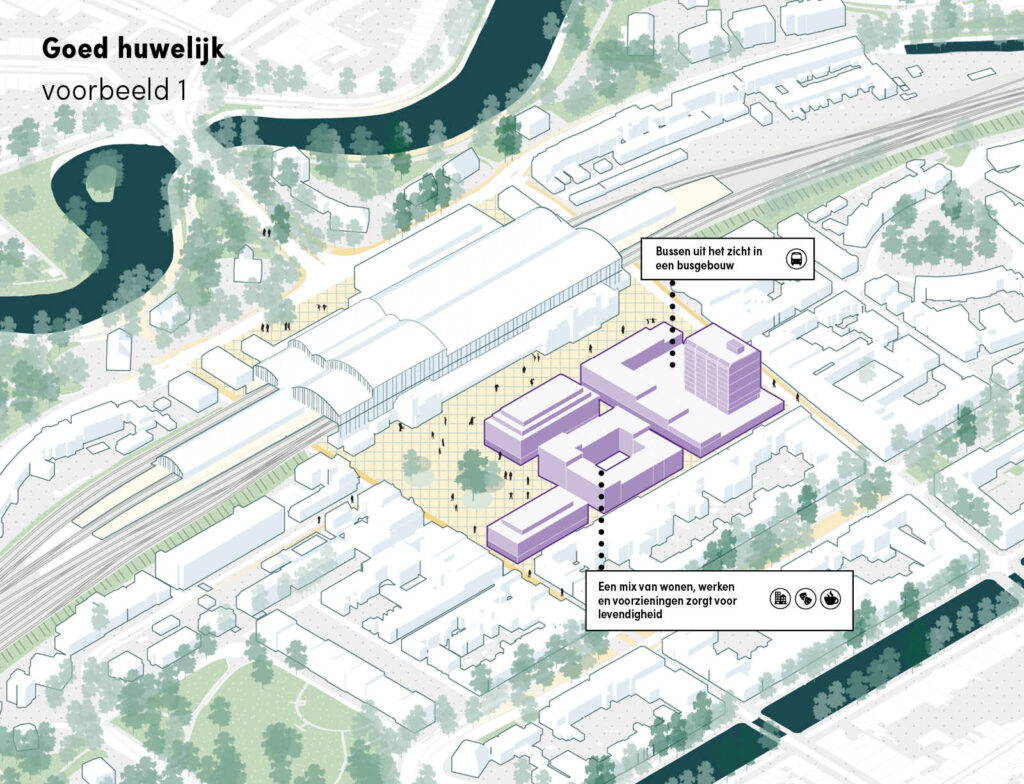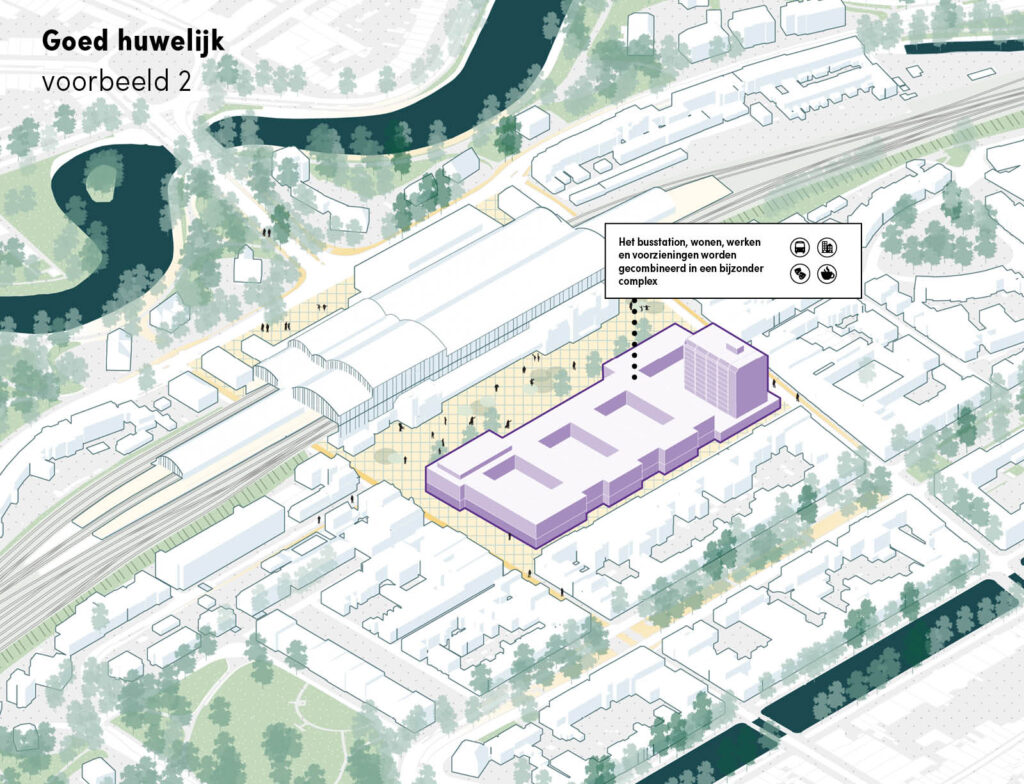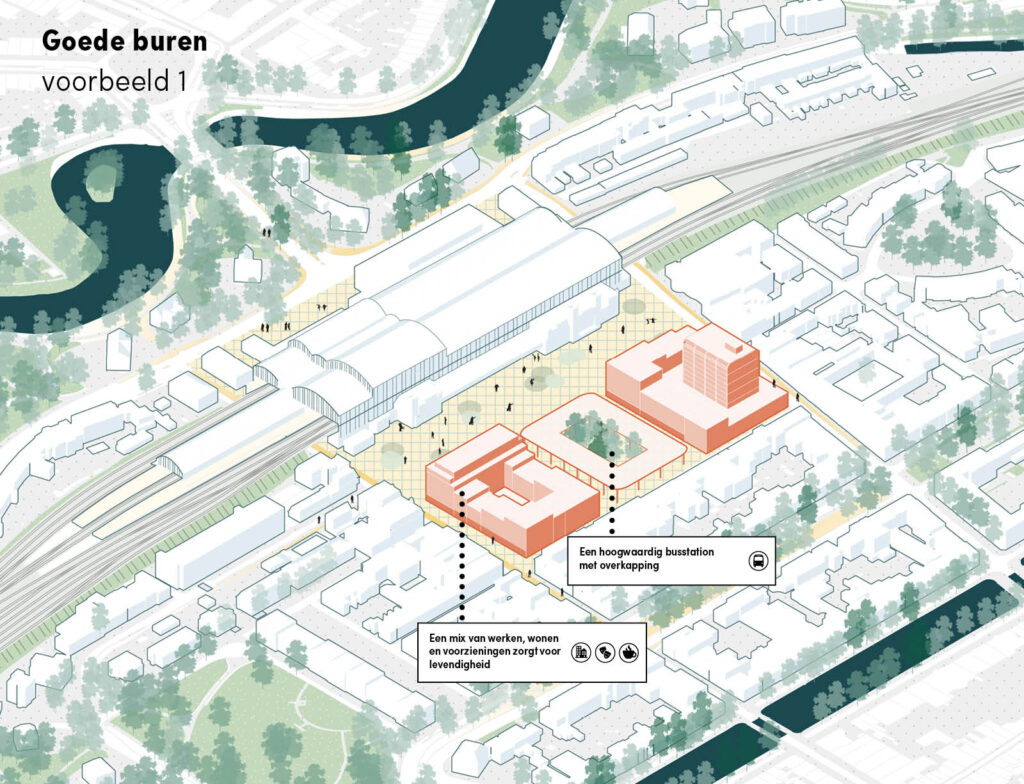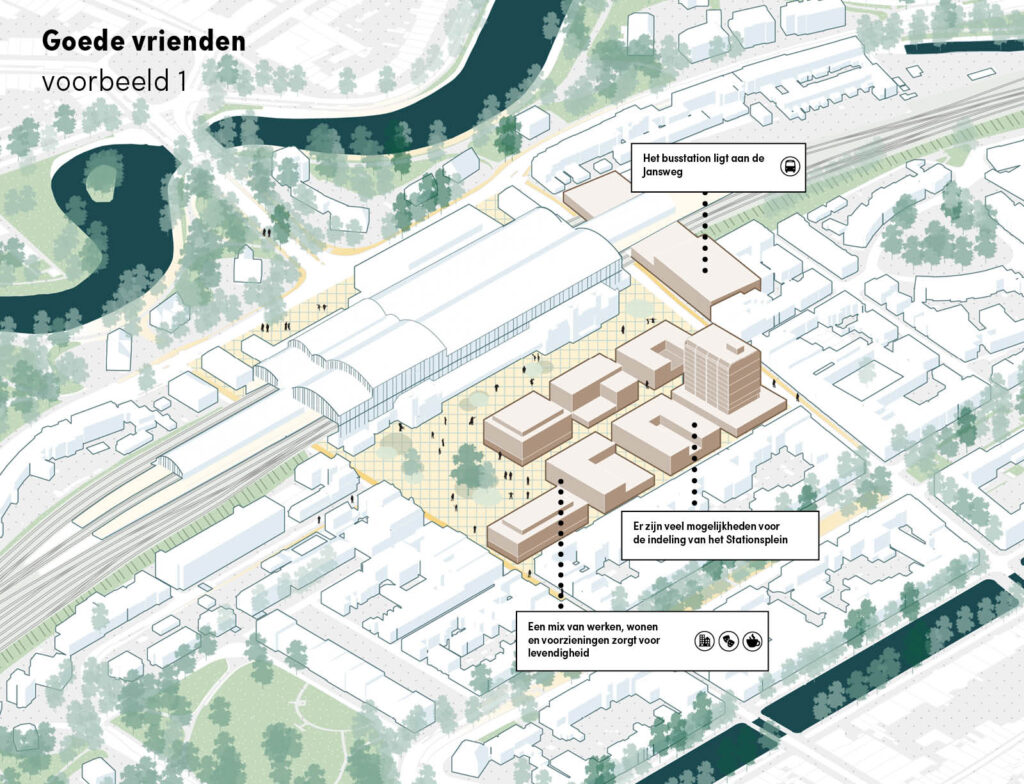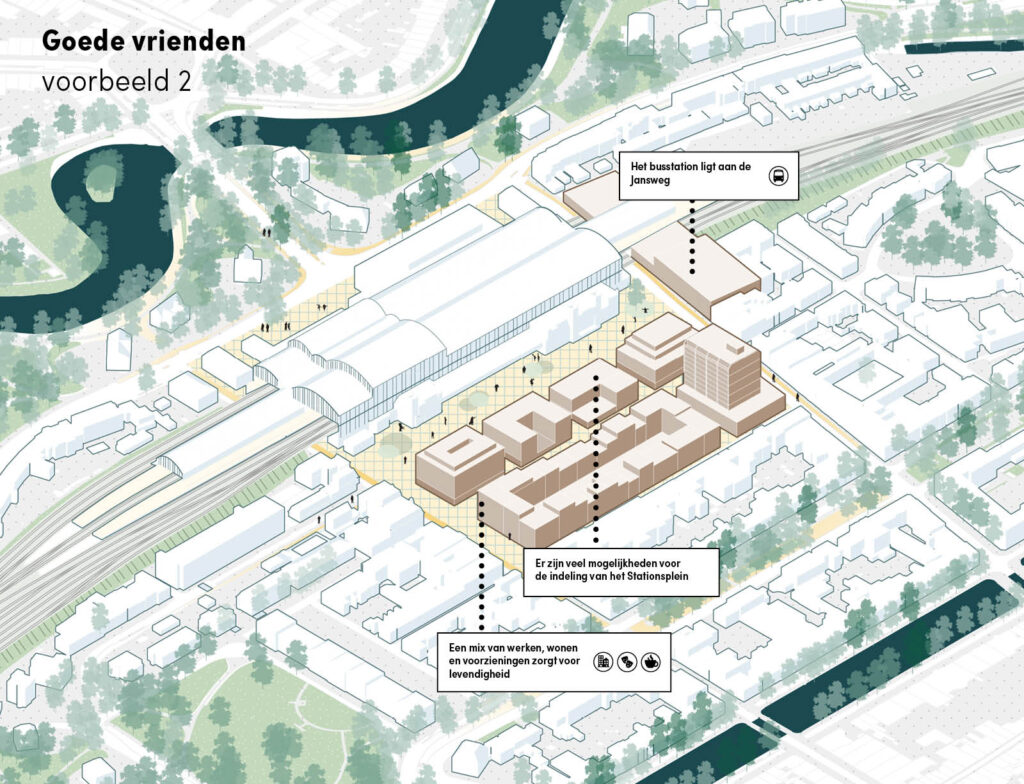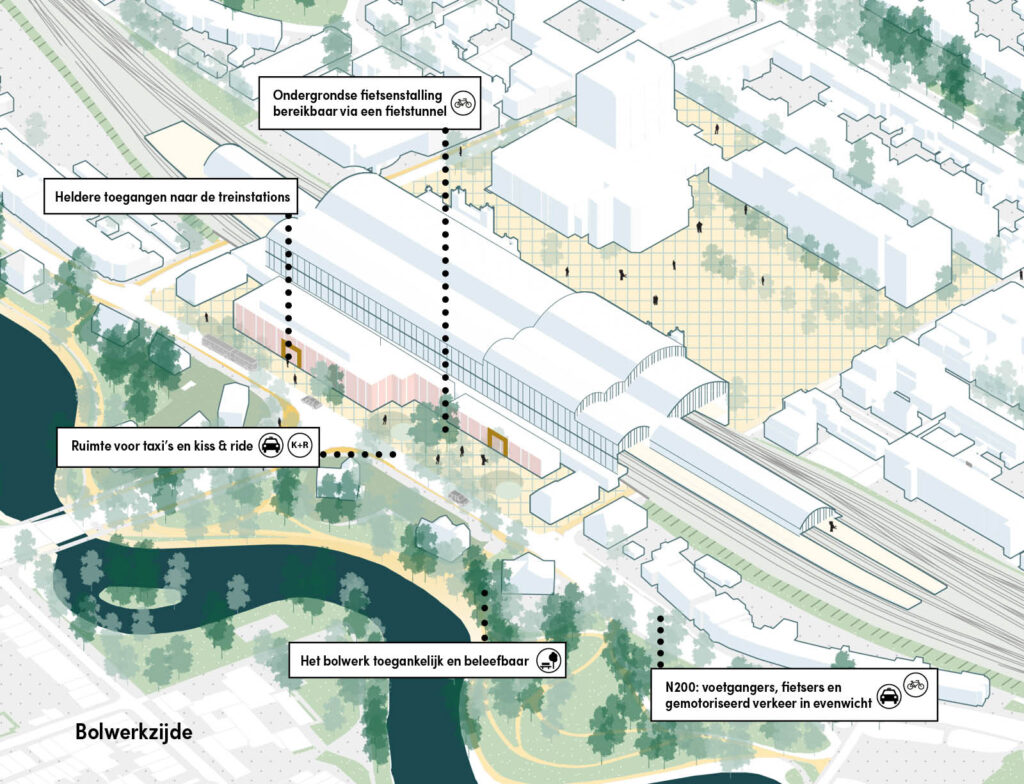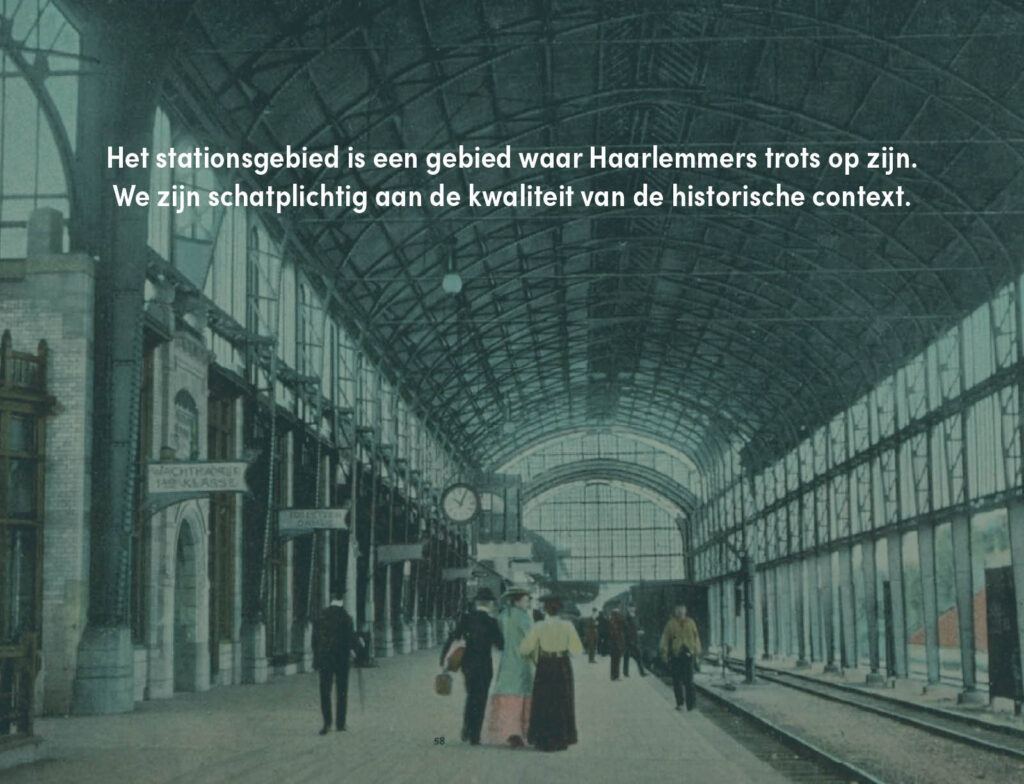The Haarlem public transport hub is reaching the limits of its capacity due to various challenges in the area. The Province of Noord-Holland and the Municipality of Haarlem see the optimization of the junction as a joint task, and have selected the collaboration of Urhahn, APPM and Goudappel-Coffeng to draw up an integrated vision for the area around Haarlem station.
The aim of the vision is to create an area that the residents and visitors of Haarlem are proud of. A nice place to stay, to start or end your journey. There are opportunities to make better use of this entrance to the city as a business location and to make it a business card for the city. One of the most far-reaching choices that has been made during the process is that the increase in bus traffic is no longer facilitated in the station area. A bus hub in Haarlem Southeast is proposed for this. Pedestrians and cyclists are given priority around Haarlem station.
Five ambitions, three variants
In the vision, five ambitions bridge the gap between mobility and a meaningful place in the city. We describe guiding statements for each ambition. These form the basis for further planning. Defining these ambitions has created clarity about the possible development variants. Some combinations are not possible.
Three variants for the development of the property and the layout of the inner-city side of the station area are in line with the ambitions. The names for the variants, “good marriage”, “good neighbours” and “good friends”, refer to the relationship between the bus terminal and buildings. The way of collaboration between these programmes is crucial for the choice of a variant. The ambitions form the foundation and the cement of the elaborations. A distinction is made between the bastion side and the town centre side, both as part of a representative entrance area of the city. For the bastion side, the vision describes the most important urban design principles and for the inner city side we show various variants and examples.
Development strategy
The development strategy focuses on how development can take shape. The choice of a variant is determined by which stakeholders are willing and able to participate. In addition, short-term actions are described, the so-called “no regret measures”. These fit in all variants and can be tackled while no choice has yet been made for a variant. These concern, for example, the downgrading of the through route to Zandvoort and the organization of extra space for bicycle parking.
